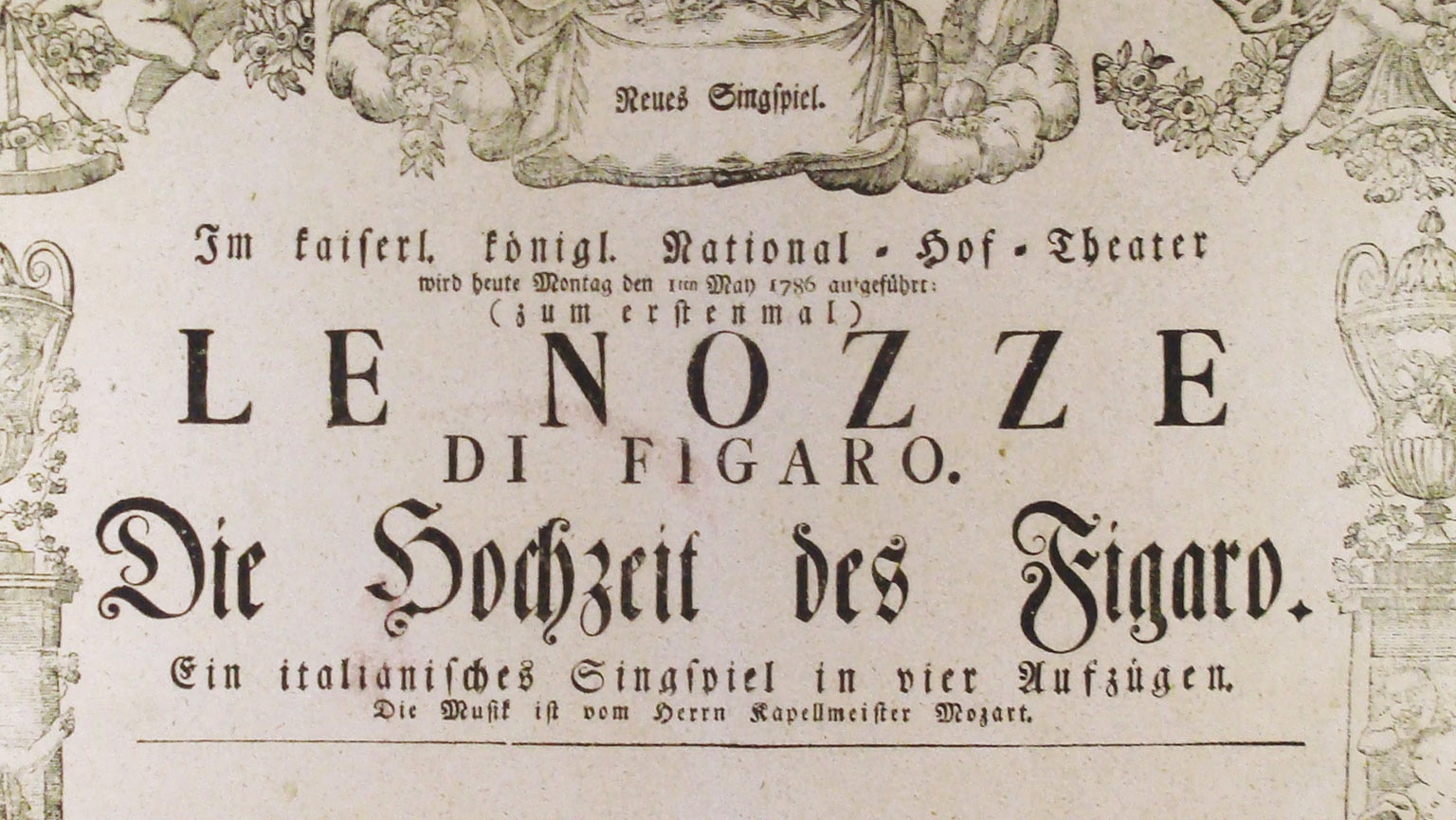In Mozart’s hands, the operatic finale becomes a dramatic and compositional tour de force.
In a previous post, we explored the complex counterpoint and unstoppable forward motion of the Act II Finale of Mozart’s The Marriage of Figaro, which as the writer Charles Rosen points out, “moves from duet, through trio, quartet, and quintet to septet in a magnificently symmetrical tonal scheme.” Mozart’s music encapsulates the distinct personality and inner thoughts and emotions of each character. The instruments of the orchestra do not provide mere “accompaniment,” but instead weave their way into the drama with their own conversing lines. Having premiered three years before the French Revolution, The Marriage of Figaro transcends opera buffa to offer a profound statement on the Enlightenment ideals of “liberty, fraternity, and equality.” It wrestles with the basic human qualities of love, lust, jealousy, and deception.
By the end of Act IV, the opera’s twisting, turning “day of madness” is set right. The Count, brought down from his royal pedestal, begs his wife’s forgiveness (Contessa, perdono! Perdono, perdono!). In one of opera’s most moving moments, the Countess offers her forgiveness. With the line, “Then let us all be happy,” the opera’s mismatched couples are correctly reunited. “Caprices and folly” are banished, and the curtain falls amid a flurry of joyful celebration.
On Wednesday, we listened to the Piano Concerto No. 22 in E-flat Major, K. 482, one of three concertos Mozart wrote while composing The Marriage of Figaro. We explored the parallels between the intimate Act IV duet between the Count and Countess and the beautiful minuet which emerges suddenly in the final movement of K. 482. Now, let’s hear the music which concludes the opera. From the orchestral lines to the voices onstage, it’s a magical, constantly shifting whirlwind of drama. Listen to the quiet tension in the nervous violin lines as mistaken identities are revealed and the farce becomes apparent.
Here are the last five minutes (with English subtitles) from Nikolaus Harnoncourt’s 1997 Zurich performance with Rodney Gilfry, Eva Mei, Liliana Nikiteanu, and Isabel Rey:
Here are the final twenty minutes of the opera from John Eliot Gardiner’s 1994 production featuring Bryn Terfel (Figaro), Alison Hagley (Susanna), Rodney Gilfry (Count Almaviva), Hillevi Martinpelto (Countess Almaviva), and Pamela Helen Stephen (Cherubino):

